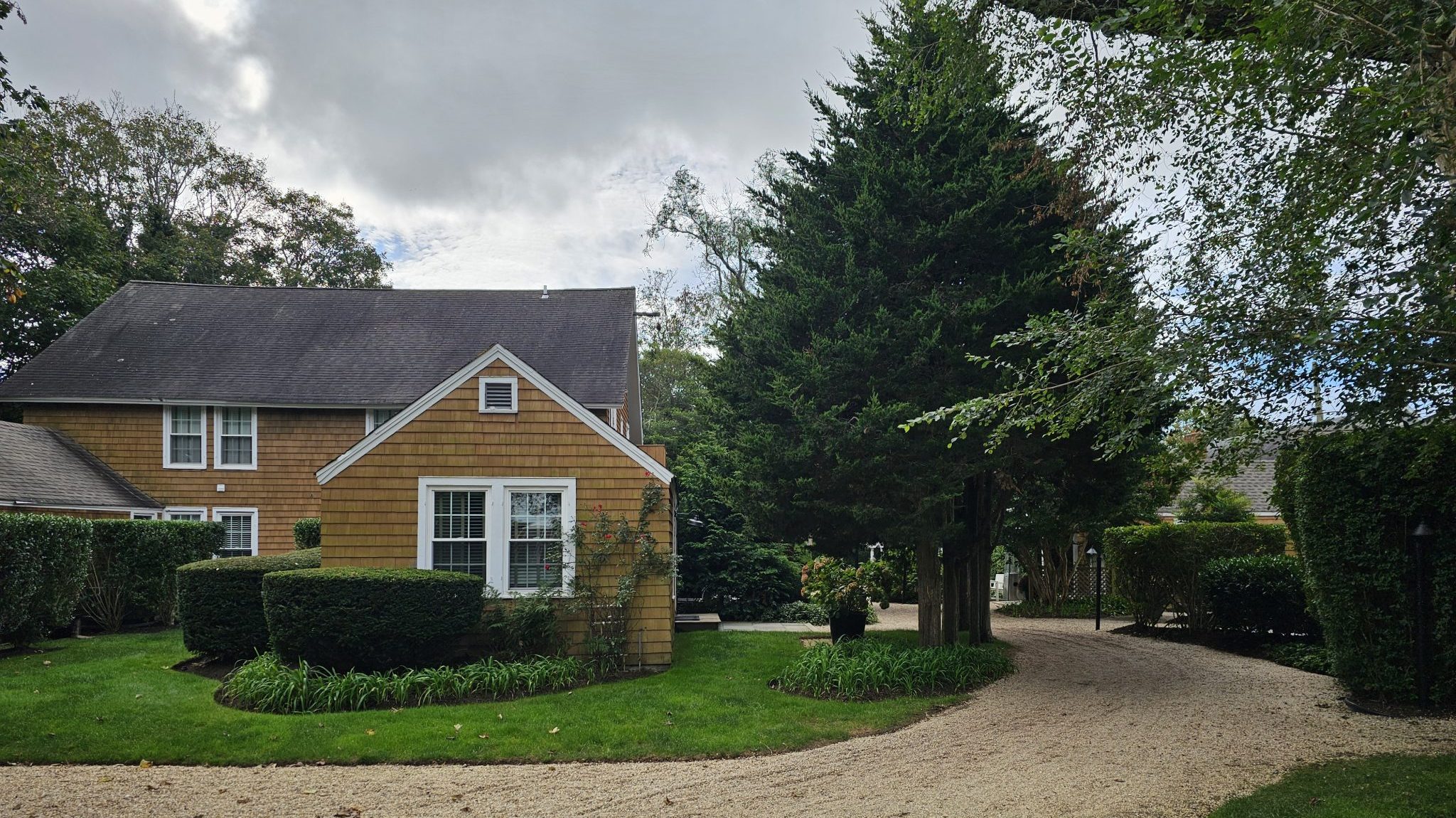It’s time to talk about assumable mortgages. Everyone knows mortgage rates are no longer super cheap. The popular 30-year fixed was in the low 3% range just last year and today is closer to 7.5%.
And it’s possible mortgage rates could move higher before they move lower, though they could be close to peaking.
For existing homeowners, this has created a strange dynamic where they are effectively “locked-in” by their low rates.
In other words, they have less incentive to move out if they need to buy again and subject themselves to a higher interest rate on their next home purchase.
But if their mortgage is “assumable,” they could use it as a leverage to sell their home for more money.
How an Assumable Mortgage Works
- Assumable mortgages can be transferred from one borrower to another on the same property
- A homeowner can sell their property and transfer their home loan to the buyer at the same time
- It’s a possible selling point if mortgage rates are much higher than they were when the original loan was taken out
- Could also be beneficial to qualify a buyer via the lower interest rate (and monthly payment)
An “assumable mortgage” is an existing home loan that can be transferred from the home seller to the home buyer at the time of purchase.
The loan assumption results in the borrower taking over the seller’s remaining loan balance, mortgage term, and mortgage rate, as opposed to applying for a brand new loan.
For example, a homeowner with a 30-year fixed mortgage set at 3% could sell their home AND transfer the loan to the buyer.
The main purpose of a loan assumption is to obtain an interest rate below the prevailing market rate.
So if mortgage rates increase rapidly in a short period of time, it could be in the best interest of the buyer to see if they can assume the seller’s mortgage.
A recent report from Black Knight revealed that something like 25% of all outstanding first-lien mortgages have an interest rate below 3%!
So clearly there’s a big opportunity now that interest rates are 7%+ and potentially rising.
The buyer may also avoid some of the settlement costs associated with taking out a fresh home loan.
Of course, if rates remain relatively flat or go down, the assumable mortgage doesn’t make much sense. This was the case for many years until recently.
Additionally, not all mortgages are assumable, so this strategy doesn’t work for everyone. It may also be paperwork intensive.
Mind the Assumption Gap…
Aside from a limitation on which mortgages are assumable, which I’ll get to in a minute, another issue is the so-called “assumption gap.”
This is the difference between the outstanding loan balance and the new purchase price.
For example, a home might be on the market for $350,000, but have a remaining loan amount of just $300,000.
Because the homeowner has been paying down the mortgage, and the property will likely sell for more than what they purchased it for, there will be a shortfall.
This gap is what needs to be dealt with by the buyer, either with cash at closing or via a second mortgage. There’s also the potential to use seller financing if permitted.
Either way, there should be an expectation that the original loan won’t be sufficient to finance the home purchase.
Let’s look at an example to illustrate.
Assumable Mortgage Example
30-year fixed mortgage rate in 2021: 2.75%
30-year fixed mortgage rate in 2023: 7%+
| $500k loan amount at 7.5% rate |
No loan assumption |
$400k loan assumption w/ $100k 2nd mortgage |
| Interest Rate | 7.5% | 2.75% |
| Monthly Payment | $3,496.07 | $1,632.96 |
| Second Mortgage Payment | n/a | $768.91 |
| Total Payment | $3,496.07 | $2,401.87 |
| Monthly Savings | n/a | $1,094.20 |
If a seller obtained an assumable mortgage at 2021’s low rates, at say 2.75% on a 30-year fixed mortgage, they could transfer it to a home buyer in the future.
This would make sense if mortgage rates increased significantly between the time they received their home loan and when it came time to sell.
The scenario above isn’t all that far-fetched, and you better believe a home buyer today would be more than happy to accept the 2.75% interest rate versus a 7.5% rate.
On a 30-year fixed with a $500,000 loan amount, we’re talking about a monthly payment of $3,496.07 at 7.5% .
But if the buyer assumed the loan instead, they could potentially save a lot of money each month and throughout the loan term.
Of course, a loan assumption would likely require a second mortgage to bridge the gap between the old and new purchase price since home values have risen since then.
So let’s assume a $400,000 outstanding loan set at 2.75% combined with a $100,000 second mortgage set at 8.5%.
Despite needing two loans instead of one, the combined payment would be just $2,401.87, or $1,094.20 lower.
This illustrates the amazing potential of a loan assumption given the wide spread between mortgage rates then versus now.
What Types of Mortgages Are Assumable?
- Government-backed loans including FHA, VA, and USDA loans are all assumable
- But restrictions may apply depending on when they were originated
- Most conventional loans are NOT assumable, including those backed by Fannie Mae and Freddie Mac
- This means a good chunk of the mortgages that exist cannot be assumed
Now let’s discuss what mortgages are assumable?
These days, most conventional mortgages, such as those backed by Fannie Mae and Freddie Mac, are not assumable.
And because conforming loans account for about 80% of the mortgage market, by extension most home loans aren’t assumable.
The exception is adjustable-rate mortgages backed by Fannie and Freddie. But how many people want to assume an ARM?
Sure, some offer a fixed-rate for the first five or seven years, but after that, they can adjust much higher.
That leaves us with government-backed home loans and portfolio loans, aka nonconforming mortgages.
FHA Loans Are Assumable (and So Are VA and USDA Loans)
The good news is both FHA loans and VA loans are assumable. And so are USDA loans. Basically all government home loans are assumable.
Before December 1, 1986, FHA loans generally had no restrictions on their assumability, meaning there weren’t any underwriting hoops to jump through. Even an investor could assume an FHA loan.
And some FHA loans originated between 1986 and 1989 are also freely assumable, thanks to Congressional action that determined certain language was unenforceable.
But let’s be honest, most of those old loans are probably either paid off, refinanced, or have very small remaining balances, so no one in their right mind would want to assume them today.
So let’s focus on FHA loans closed on or after December 15, 1989, which are governed by the HUD Reform Act of 1989.
These need to be fully underwritten if assumed, just as they would if they were brand new FHA loans.
In other words, underwriters will need to review a potential borrower’s income, assets, employment, and credit to determine their eligibility.
Additionally, it should be noted that investors are not able to assume these newer FHA loans, only owner-occupants. So the property must be your primary residence.
One bright spot is that a second mortgage can be used in conjunction with an FHA loan if you don’t have a sufficient down payment.
VA Loan Assumptions Can Be Tricky for a Couple Reasons
VA loans are also assumable, and require lender approval if closed after March 1, 1988, but there are some complicated issues that revolve around VA eligibility.
For example, if the borrower who assumes your VA loan defaults, you may not be eligible for a new VA loan until the loss is repaid in full.
One way around this is to obtain a Substitution of Entitlement (SOE) to free up the original borrower’s entitlement.
Additionally, while it’s possible for a non-veteran to assume a VA loan, this too can impact the seller’s entitlement in the future.
Simply put, the home seller’s VA entitlement will be stuck with the assumed property if purchased by a non-veteran and not released until paid off via sale/refinance/prepayment.
This might not be an issue if you don’t need or expect to get another VA loan, but otherwise could be a problem.
Lastly, those who need a second mortgage to make the loan assumption work must ensure it too is assumable. This can serve as a potential roadblock as well.
How Do I Know If My Loan Is Assumable?
I’ve mentioned the types of loans that are assumable. But if you’re not quite sure, check your loan paperwork.
Hopefully you saved it somewhere. If so, find your Closing Disclosure (CD) and go to page 4.
There you will find a section of Loan Disclosures that includes an Assumption question.
If the top box is checked, it means a buyer of your property can also assume your loan.
If the bottom box is checked, it means loan assumption is not permitted by the lender.
The CD above is from a 5/1 adjustable-rate mortgage I took out a while back (don’t worry, I refinanced to a 30-year fixed before rates skyrocketed!).
But even though the loan was conventional, it was assumable because it was an ARM.
The thing is, nobody wants to assume an ARM, which is why they’re assumable. Home buyers want to assume a 30-year fixed that starts with a ‘2’ or a ‘3’.
Is an Assumable Mortgage Worth the Trouble?
- Most assumable mortgages still need to be fully underwritten
- This means considering your income, assets, and credit to gain approval
- And even then it might not be worth it, nor will it be feasible to assume one in many cases
- If the remaining loan balance is too small it may be insufficient to cover the purchase price without a significant down payment or second mortgage
As you can see, while they have the potential to be a big money-saver, assumable mortgages aren’t entirely cut and dry.
First and foremost, be sure to get a liability release to ensure you aren’t accountable if the borrower who takes over your mortgage defaults in the future.
You won’t want to be on the hook if anything goes wrong, nor have to explain to every future creditor what that “other loan” is on your credit report.
Additionally, understand that an assumable mortgage will likely only cover a portion of the subsequent sales price.
The mortgage balance will be somewhat paid off when assumed, and the property value will likely have increased.
This means you’ll need to come in with a large down payment and/or take out a second mortgage when assuming a mortgage.
For example, a mortgage lender may be able to offer a simultaneous second lien for up to 80% of the property value to cover the shortfall.
If you need a second mortgage, you should do the math to ensure it’s a better deal with the blended rate factored in versus a brand new first mortgage.
Also note that processing a loan assumption can be time-consuming and paperwork-intensive,and possibly riddled with hiccups. So it likely won’t be as easy as just taking out a new mortgage.
[New platform Roam allows home buyers to assume mortgages with ease.]
If You’re a Seller, Mention It, If Buying a Home, Ask If It’s Assumable
The assumable mortgage hasn’t been on anyone’s radar over the past couple decades because mortgage rates kept creeping lower and lower.
But now that they’re surging higher and higher, you’ll likely hear more about them. Just know the many pitfalls and drawbacks involved.
If you’re a homeowner with an assumable mortgage, you could use it as a tool to sell your home more quickly and/or for more money, instead of say offering seller concessions or a buydown.
Or perhaps help a home buyer qualify for a mortgage who otherwise might not at current market rates.
If you’re a prospective home buyer, it’s worth asking if the home seller’s loan is assumable. It could save you some money if the spread between their rate and current rates is wide.
Lastly, for those thinking they can make money by taking out a mortgage that can later be assumed, it’s probably not advisable to obtain one just in the hopes of using it as a selling tool in the future.
Sure, the buyer may be interested in assuming your mortgage, but they may not be. If you already have an FHA loan, sweet, it may come in handy when rates rise and you decide to sell your home.
But paying costly mortgage insurance premiums on an FHA loan just for its potential assumption value is a fairly big bet to make if you can get a conventional loan for a lot cheaper.
Long story short, don’t assume someone will assume your loan, but don’t overlook it either.
Assumable Mortgage FAQ
Can you transfer a mortgage to someone else?
If the loan is assumable, it’s possible to transfer a home loan to another person. But the original borrower will need to sell their home. And the new borrower will need to qualify for the loan.
Are all mortgages assumable?
No. Many are not, including home loans backed by Fannie Mae and Freddie Mac. Additionally, some conventional loans (like jumbo loans) also may not be assumable.
But government-backed loans such as FHA, VA, and USDA loan can generally be transferred to other people.
Can I transfer my mortgage to a new property?
Typically not. While “mortgage porting” is a thing in places like the United Kingdom and Canada, it doesn’t seem to be an option in the U.S.A.
It’d be nice to take your low-rate mortgage with you, but lenders likely wouldn’t be thrilled, especially if you had a 30-year fixed set at 2%.
Mortgage porting in other countries makes sense because the loans often aren’t long-term fixed-rate loans.
For example, in the UK a borrower might port their mortgage to keep a short-term low rate or to avoid an early repayment charge, their version of a prepayment penalty.
What’s the benefit of an assumable mortgage?
For the home buyer, it’s an opportunity to obtain a mortgage rate below current rates (if rates have risen substantially since the original loan was taken out).
For home sellers, it’s an additional selling point to entice buyers. It may also make qualifying easier for a buyer who otherwise might not be able to afford the home.
Do I need a down payment when assuming a mortgage?
Chances are you might need both a down payment and a second mortgage to make it work, depending on the purchase price and remaining loan balance.
Just note that VA loan assumptions require the second mortgage to be assumable too! And that might be a deal-breaker.
What is a mortgage transfer?
Often, this refers to a home loan being transferred from the originating lender to a new loan servicer shortly after closing. This entity collects monthly mortgage payments and may also manage an escrow account.
Your loan servicer may also transfer the mortgage servicing rights on to a new servicer later during the loan term.
Be sure to pay close attention to any changes to ensure payments are sent to the right company.
Assumable Mortgage Pros and Cons
The Good
- Home buyers can obtain a much lower mortgage rate (and monthly payment)
- Home sellers can entice more prospective buyers with their low-rate mortgage
- May be easier to qualify for the mortgage at the lower payment
- An appraisal may not be required
The Maybe Not
- Only offered on certain types of home loans (mostly FHA/VA)
- Remaining loan balance may not be large enough to fund the purchase
- A second mortgage may be required to cover the shortfall
- Could be paperwork intensive and take a lot of time to process
(photo: Andrew Filer)
Publisher: Source link











